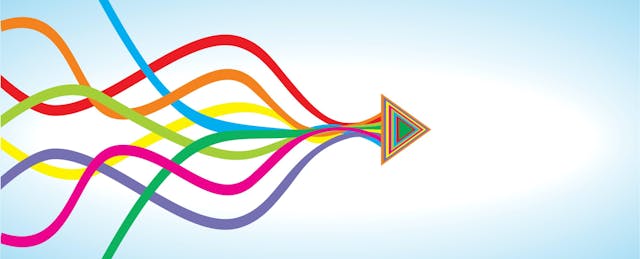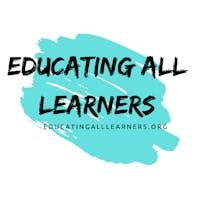As an education community, we are beginning to understand the depth of the pandemic’s impact, especially on our students of color, our English Language learners and our students with disabilities. But we are also beginning to understand the breadth of connection, growth and networks that we have encountered over the past two years.
Bringing together more than 100 organizations across the fields of disability advocacy, special education, civil rights and K-12 nonprofits, the Educating All Learners Alliance (EALA) is one such network formed to ensure equity and support for students with disabilities and learning differences across education environments.
Learn about the members that make up the Educating All Learners Alliance
Barbara Pape of Digital Promise, a founding member of EALA, accurately summarizes the unique set of challenges and opportunities brought about by the pandemic: “While a year teaching and learning with COVID-19 looming unveiled inequities that have always existed, what was learned can inform how the nation proceeds in transforming educational systems designed to understand and address the learner variability of each student.”
Since 2020, three things have become clearer than ever:
- Our students of color, English learners and students with disabilities have faced a disparate impact on their educational experience from COVID-19.
- Student-centered learning leads to quantitative and qualitative benefits, such as increased student engagement in learning and other school activities, higher academic achievement gains and stronger relationships between students and teachers.
- The use of education technology continues to increase in classrooms across the country, presenting new opportunities to engage all learners.
So, how do we put this all together? For EALA, this is a clear signal that we, as an education community, must commit to the principles of Universal Design for Learning (UDL) for the benefit of all learners.
Recently, EdSurge spoke with Regina Meeks, an elementary math and ELA teacher in North Carolina. A vocal proponent of UDL, Meeks reflects on her approach to student engagement: “How do I create a content lesson so that it is engaging for all learners? [W]hen I think about UDL, that's the question I'm looking for: How am I going to engage all learners? Because we know, as educators, one size does not fit all. So, I start thinking, ‘Okay, how can I make it interactive? How can I make it fun? What are the tools that the students may need for independence and autonomy?’ That's always been my thinking.”
Meeks had previously participated in the UDL Product Certification listening sessions sponsored by EALA. During these listening sessions, EALA members, including CAST and Digital Promise, facilitated conversations with educators and students currently implementing, and being impacted by, UDL, usability and accessibility features of edtech tools in their classrooms. These listening sessions informed criteria for the UDL Product Certification, ensuring that the signal resonates with the field's priorities.
UDL expert, Loui Lord Nelson, Ph.D., published an article that addresses many of the myths and facts associated with UDL, highlighting what Regina Meeks has experienced in her own classroom. As Nelson observes, “because every student is a variable learner, UDL is a helpful framework to use in any classroom, especially one that includes students of all ability levels. When you design your lessons based on the UDL framework, you create an accessible learning environment where all of your students have the best chance to learn.”
And, with steady growth in the use of edtech in K-12 classrooms across the country, educators and edtech companies are increasingly focused on accessibility and UDL as they design experiences to engage all learners. As students and teachers return to in-person learning, Learn Platform reports that the presence of edtech in classrooms continues to rise, with the notable example of classroom engagement and instruction tool usage expanding from 17.5 percent to 22.5 percent, just since last year. This calls for a renewed look at the full array of opportunities made possible through learning technology in the classroom.
At the national 2022 ASU+GSV Summit, Jean-Claude Brizard, President and CEO of Digital Promise, remarked on the connective role of edtech in the relationship between educators, students and educational materials: “In that interaction, I often think of the role of technology, of machines, in enhancing this relationship. That should be the role of edtech—how we bring together an ecosystem of players—technologists, educators, researchers, funders/investors—in facilitating this work, ensuring that machines and their designers continue to learn, researchers and educators continue to inform the process, and students ultimately continue to learn more. This is our collective work.”
“UDL is a framework for designing inclusive and equitable learning experiences for all people, addressing the variability in all of us,” says Director of Business Development at CAST, Steve Nordmark. “That’s why the UDL Product Certification project is so important to our education ecosystem. It’s not only for Special Education; it’s about the proactive and iterative design to reduce barriers to learning for all people.”
The Educating All Learners Alliance is working to bring this connective idea to fruition in real classrooms. The UDL Product Certification, the EALA Tech Tool Library and the Digital Promise Learner Variability Project are essential tools to help us approach technology use, student-centered learning and student variability as shared components of a broad solution. Only when we encompass all three of these key areas will we begin to catalyze the strength and unique identities within every student.



